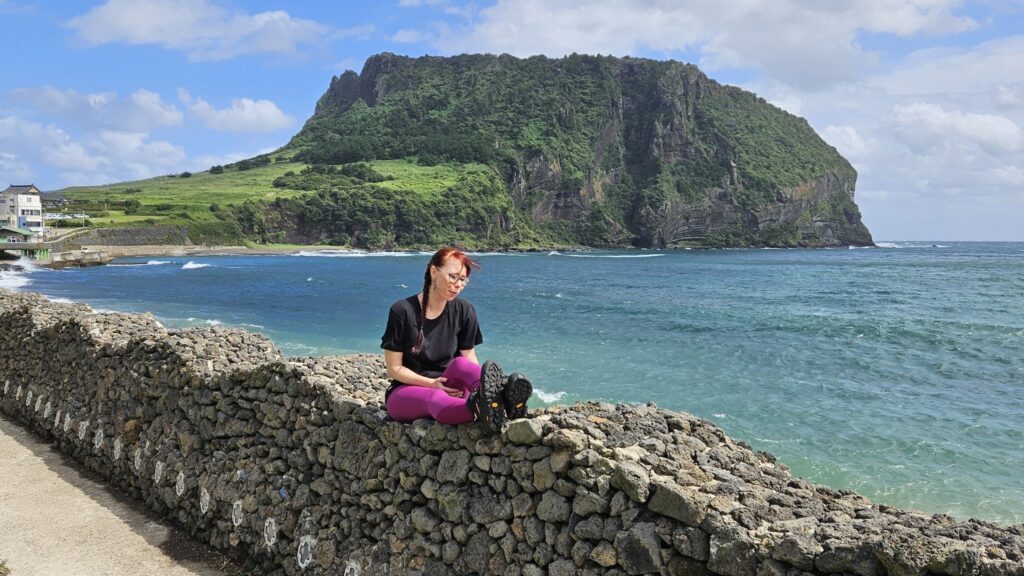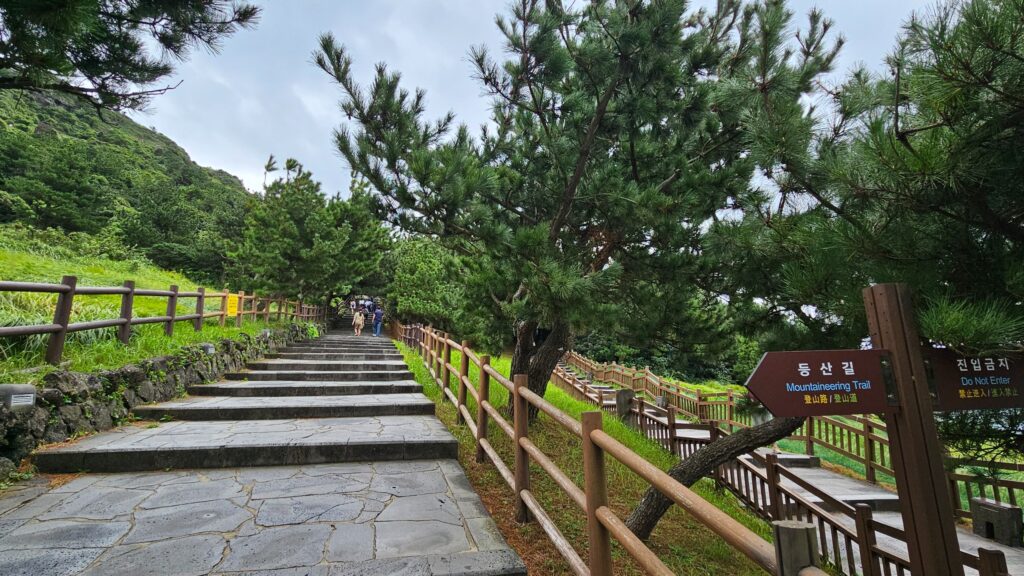
DAY 7
(Reading time: 4 minutes)
Today, we had reserved a hike to Hallasan, the highest mountain in South Korea. That’s right – reserved. After all, they can’t just let tourists wander around freely at any time of the day or night. Who knows how long they’d stay? Order must prevail, visitor flow must be regulated, and attendance limited! Climbing to the summit is only possible with a valid reservation.
How does it work?
Even with a reservation, there are further „buts“:
The lengthy reservation process alone is enough to discourage many. So, when we saw gray clouds over the mountains and clear blue skies by the sea in the morning of our planned hike, we quickly abandoned the idea of Hallasan. Surprisingly, the looming threat of a 3-month hiking ban for a missed reservation didn’t faze us.
A Change of Plans: Sunrise Peak
Instead of a grueling climb with uncertain results and certainly bad weather, we opted to visit one of the most beautiful places on Jeju – Seongsan Ilchulbong (Sunrise Peak).

Seongsan Ilchulbong is a volcanic crater on Jeju’s eastern coast. It’s a must-see for anyone visiting the island. Even the weather seemed thrilled with our new plan, as the sun shone brightly the entire time.
We took a red express bus (#111) from the airport stop heading east. Ironically, this “express” bus stopped at nearly every (im)possible village, covering the 50 km journey in an hour and a half. On the bright side, it required no transfers!
The crater greeted us from afar – an iconic natural formation.

You can either get off one stop earlier for a 30-minute walk to the crater or ride all the way to the trailhead. Either way, I recommend taking the extra walk at least on the way back to enjoy stunning views of the crater from the coastal side.
The Climb
Entry costs 5,000 KRW per person.

There are separate trails up and down to prevent overcrowding. The uphill route is called the “Mountaineering Trail,” which amused us since we knew what to expect – steps and mats. Sure enough, the entire path to the top was stairs.

We reached the summit in just 15 minutes. The crater’s impressive size left us in awe. No camera can truly capture the grandeur of such places. Seeing it with your own eyes is irreplaceable.
The crater is 600 meters wide, 90 meters deep, and its highest point is 182 meters above sea level. Formed around 6,700 years ago by hydrovolcanic activity, it has the classic circular depression (a “tuff ring”). Visitors aren’t allowed to enter the crater or walk around it – you can only admire it from a wooden observation deck.
The Descent
On the way down, the trail offers views of Jeju’s many volcanic cones scattered across the island.
Before leaving the area, I recommend a short detour to the left side of the crater. Watching the crashing waves against the cliffs has a strangely hypnotic, relaxing effect.

The sound of the sea is loud, and the wind is strong – very strong.
It’s almost windy enough to knock over a small child or send anything lighter than a beagle flying to warmer climates.
A Perfect End to the Day
Our day ended on a high note, with buses running smoothly both ways. We capped it off in the best way we know – with food.
We revisited our favorite Japanese bistro for the second time and ordered chicken dishes with an unusual twist for Asia – cheese. My schnitzel stuffed with gouda tasted kind of normally great, but Mark’s dish stole the show! Behold the yellow glory of chicken swimming in cheddar! A Michelin-worthy indulgence for the taste buds.
-endy-
DONKEY’S SPECIAL:
-mj-